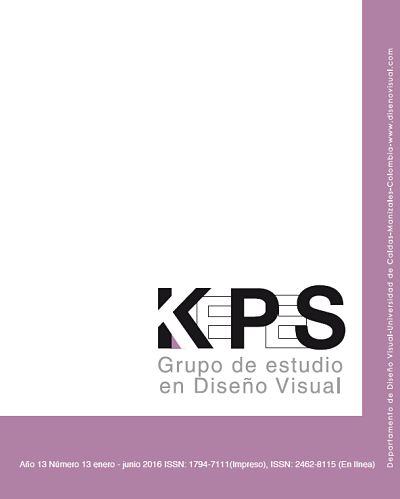Authors
Abstract
To contribute to the consolidation of industrial design as a transdisciplinary discipline a reflection on its foundations takes place, and a series of tools for analysis and method involving concepts of the theory of complexity in their processes are proposed. Design thinking registered in social systems (complex by definition) resolution must have a very specific and particular way of approach that, addressing multiple aspects from different disciplines, fields of knowledge and human experience must interpret and translate into requirements for design solutions. This implies a change in the paradigm, this is to say thinking about the design process in an open and complex manner rather than in a linear and reticulate manner, relating conceptual outlines of dichotomies such as theory-practice, reason-emotion among others. This allows design to contemplate multiple variables and relationships in it attending the contingency in a systemic way and reducing fear of uncertainty and implicit chaos in its processes. This article presents a reflection on design methods related to research and the creation of the discipline as a contribution to the definition of specific aspects. The reflection addresses initially theories such as “design thinking” and the origins of its research outlines. These outlines derive from the hard sciences and the atomization of knowledge, the impossibility of its direct application to design as part of the social sciences, the complexity as an essential element in the design process and the growing lack of definition while incorporating multiple contradictory variables given its multidisciplinary character.
References
Beuchot, M. (2002). Perfiles esenciales de la hermenéutica. México, UNAM.
Buchanan, R. (1992). Wicked Problems in Design Thinking. Design Issues Vol. 8, No. 2, pp. 5-21
Buchanan, R.; Vogel, C. (1994). Design in the learning organization: educating for the new culture of product development. Design Management Journal, Vol. 5 No. 4, pp. 7-10.
Capra, F. (1998). La trama de la vida, una nueva perspectiva de los sistemas vivos. Barcelona: Editorial Anagrama.
Galfré, Ó; Barinboim, B (2001). Salud y familia: la relación entre enfermedad y dinámica familiar. Aportes para el desarrollo del tema. Documento de Trabajo N° 78, Universidad de Belgrano. Recuperado de: http://www.ub.edu.ar/investigaciones/dt_nuevos/78_galfre.pdf
Margolín, V.; González, C.; Salinas, Ó.; Rodríguez, L.; Morales, E.; Losada, A.; Garone, M.; Buchner, D.; Giménez, J. (2005). Las rutas del diseño. Ensayos sobre teoría y práctica. México: Editorial Designio
Morin, E. (2007). Introducción al pensamiento complejo. Barcelona: Editorial Gedisa.
Porter, M. E. (2008). The Five Competitive Forces That Shape Strategy. Harvard Business Review, Jan. 2008.
Símón Sol, G., Mora, J.R, Arámbula, P., et al. (2012). Método para el proyecto de diseño industrial En: F. J. Gutiérrez (comp.) Conceptos clave para la formación del diseñador industrial (pp. 45-108). México: Universidad Autónoma Metropolitana, Azcapotzalco.
Simón Sol, G. (2010). ¿Qué es el diseño? Trece principios básicos, Eduardo Ramos Watanave, Taller Servicio 24 Horas, año 6, núm 12: 5-18. México, UAM Azcapotzalco.
Uribe, Miguel. (2015). Diseño, consumo e individualidad. Diseño y Producto. En J. Buitrago (Ed.), Diseño y Producto (pp. 47-89). Cali, Valle del Cauca: Programa Editorial Universidad del Valle.
Yagou, A. Rewriting design history from an evolutionary perspective: Background and implications. (s.f). Recuperado de: http://www.yagou.gr/papers/YAGOURewriting_Design_History.pdf.

 pdf (Español (España))
pdf (Español (España))
 FLIP
FLIP





















